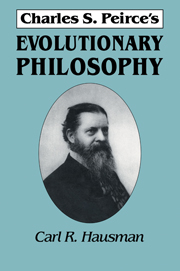Summary
Beginning a book on the philosophy of Charles S. Peirce is something like entering a labyrinth with almost as many entrances as passages. What aspect of his thought provides the best entry? should Peirce's work be considered in chronological order? Should his ideas be traced to antecedents in the history of philosophy? Should his thought be understood as representative of a school or tradition such as empiricism, rationalism, pragmatism, Aristotelianism, orscholasticism? Should he be approached as an antimetaphysician, or should his thought be interpreted more broadly in terms of his metaphysical speculations? Are there certain topics, themes, or theses that are more basic and hence best used as organizing principles in offering an account of his philosophy? These questions reflect the fact that selection, arbitrary or purposeful, is necessary at the outset. The approach to be taken in this book has a purpose. It assumes that there are basic themes in Peirce's thought that can be used as organizing principles. These themes express the two main purposes mentioned in the Preface: to introduce Peirce to readers who have had little or no acquaintance with his ideas and to propose that there is a cohesiveness in his thought that implies an architectonic – an architectonic that has at its core a special kind of realism.
Our entry into Peirce's philosophy, then, will be made through four themes, each serving as the topic of a chapter. These themes were chosen because they are foundational ingredients of his thought as a whole.
- Type
- Chapter
- Information
- Charles S. Peirce's Evolutionary Philosophy , pp. 1 - 19Publisher: Cambridge University PressPrint publication year: 1993

